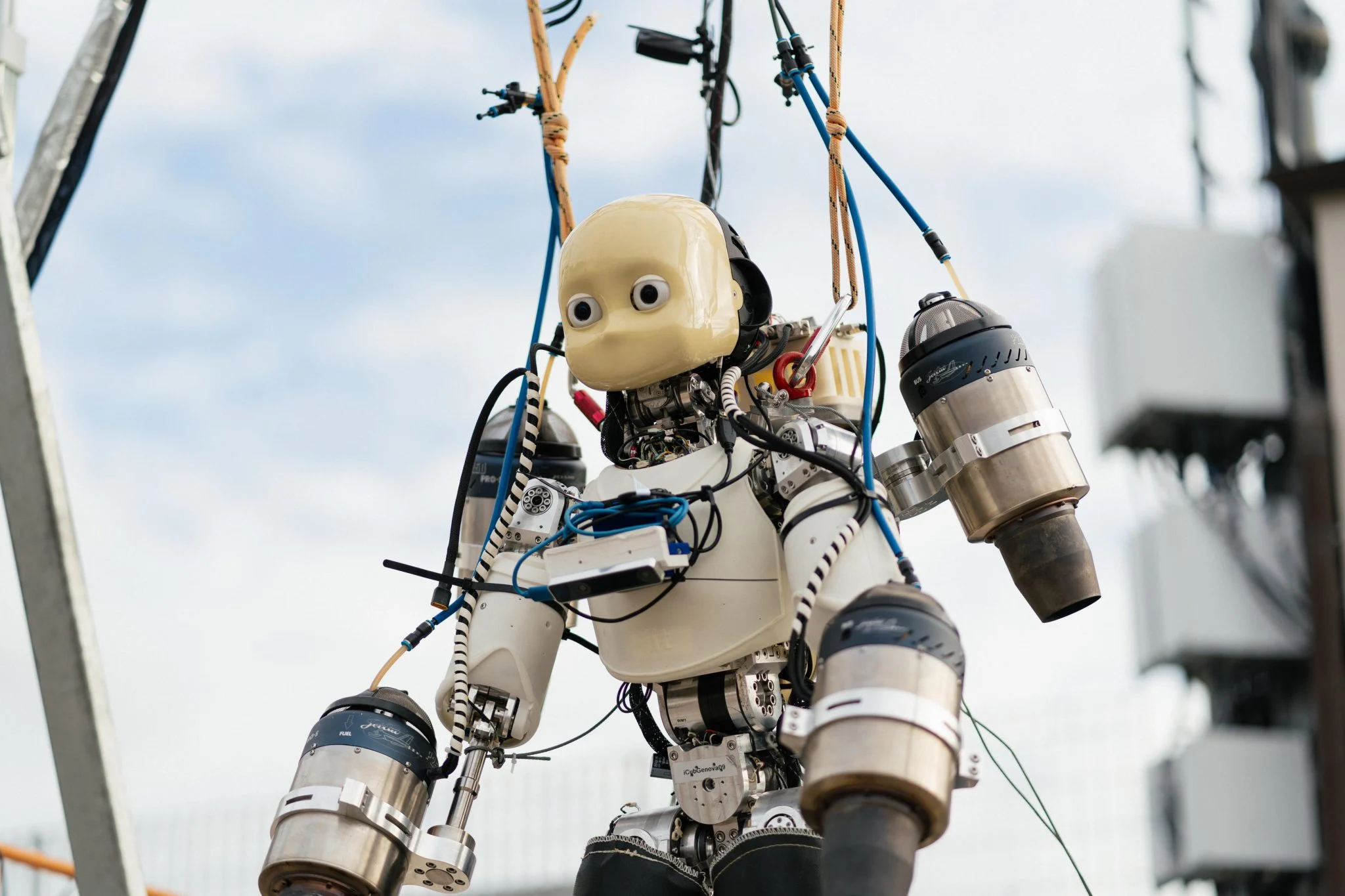A Real-Life Iron Man Emerges From Italy
In a revolutionary step forward in robotics, Italian engineers have unveiled iRonCub3, the world’s first jet-powered humanoid robot capable of controlled flight. With a blend of artificial intelligence and microjet turbines, this 70-kilogram marvel is redefining what’s possible in both robotics and aviation.
How Does iRonCub3 Fly?
Microjet Power Meets Human Form
Created by the Italian Institute of Technology (IIT), iRonCub3 features four miniature jet engines—two on its arms and two mounted in a backpack-style housing. Together, they generate over 1,000 newtons of thrust, lifting the robot about 50 centimeters off the ground.
Heat and Force: A Powerful Combo
To withstand extreme conditions, the robot is built with a titanium spine and specially designed covers that resist temperatures of up to 800°C. The challenge? Designing a humanoid shape that can stay balanced and stable in the air. That’s where AI takes over.
Brain Meets Brawn: AI in the Sky
Neural Networks for Navigation
Flight control is handled by neural network-based artificial intelligence. The system constantly processes sensor data, adjusting the jet thrusts in real time to keep the robot upright—even in tricky flight scenarios or uneven air currents.
Smart Reactions, Smooth Flight
The robot can manage complex actions like sequential engine ignition or compensating for a limb shift mid-air. It’s not just flying; it’s thinking while flying.
What’s Next? Future Applications and Possibilities
From Fiction to Function
iRonCub3 isn’t just a tech demo—it opens up real-world use cases. Think search-and-rescue operations in collapsed buildings, navigating hazardous industrial zones, or exploring places unsafe for humans. This robot is being designed to go where wheels and legs alone can’t.
A Glimpse into Tomorrow
This breakthrough isn’t just about flight—it’s about creating robots that can operate across land and sky. With continued development, iRonCub3 could lead the way for next-gen robotics that are as versatile as they are intelligent.
Want to See iRonCub3 in Action?
Check out the official research paper here and imagine the future where Iron Man isn’t just fiction—it’s our next emergency responder.
Reference: “Learning aerodynamics for the control of flying humanoid robots” by Antonello Paolino, Gabriele Nava, Fabio Di Natale, Fabio Bergonti, Punith Reddy Vanteddu, Donato Grassi, Luca Riccobene, Alex Zanotti, Renato Tognaccini, Gianluca Iaccarino and Daniele Pucci, 18 June 2025, Communications Engineering.
DOI: 10.1038/s44172-025-00447-w
Daily science news 2025, Best science blogs, New science research 2025, Popular science articles, Latest science news 2025










